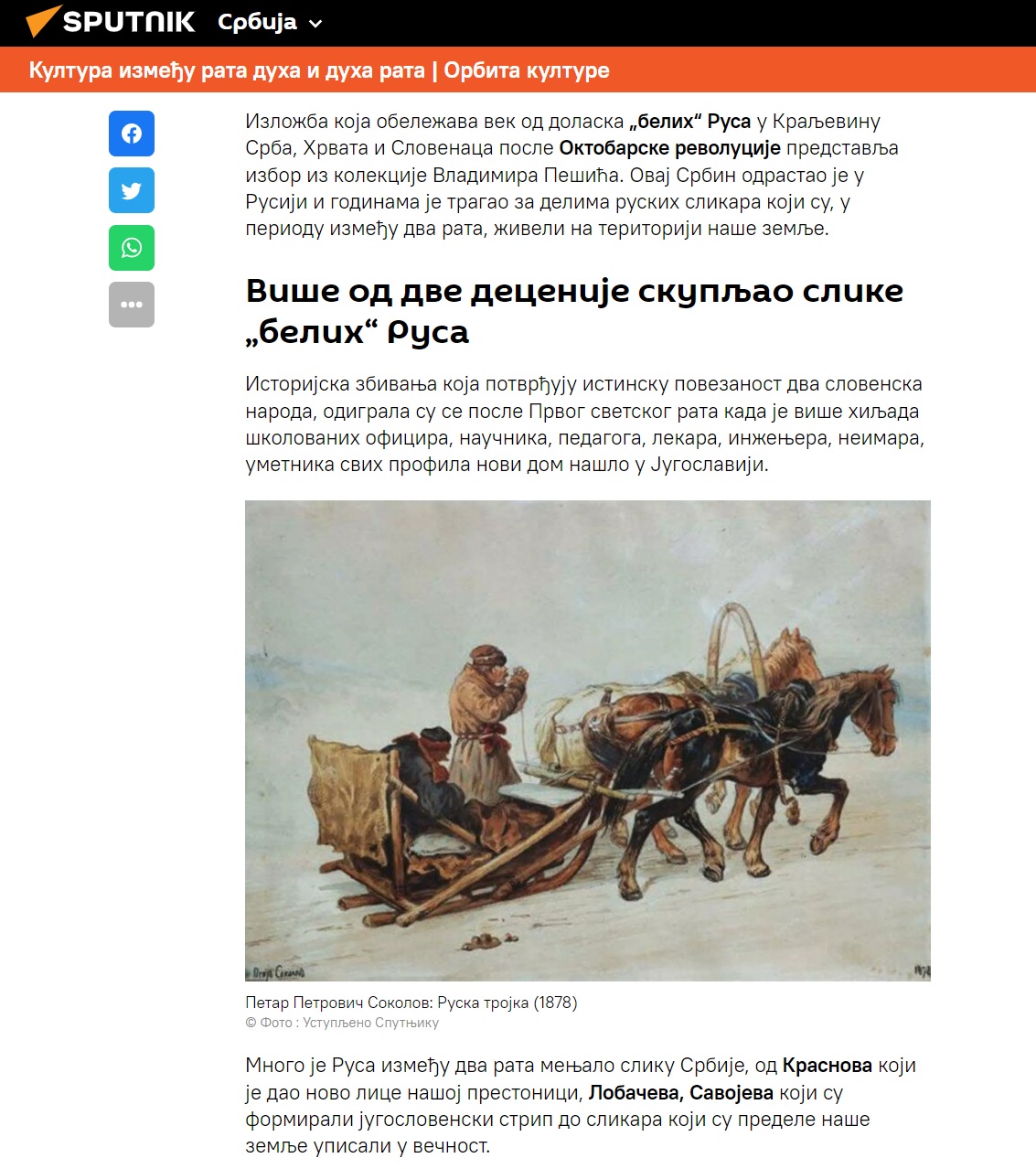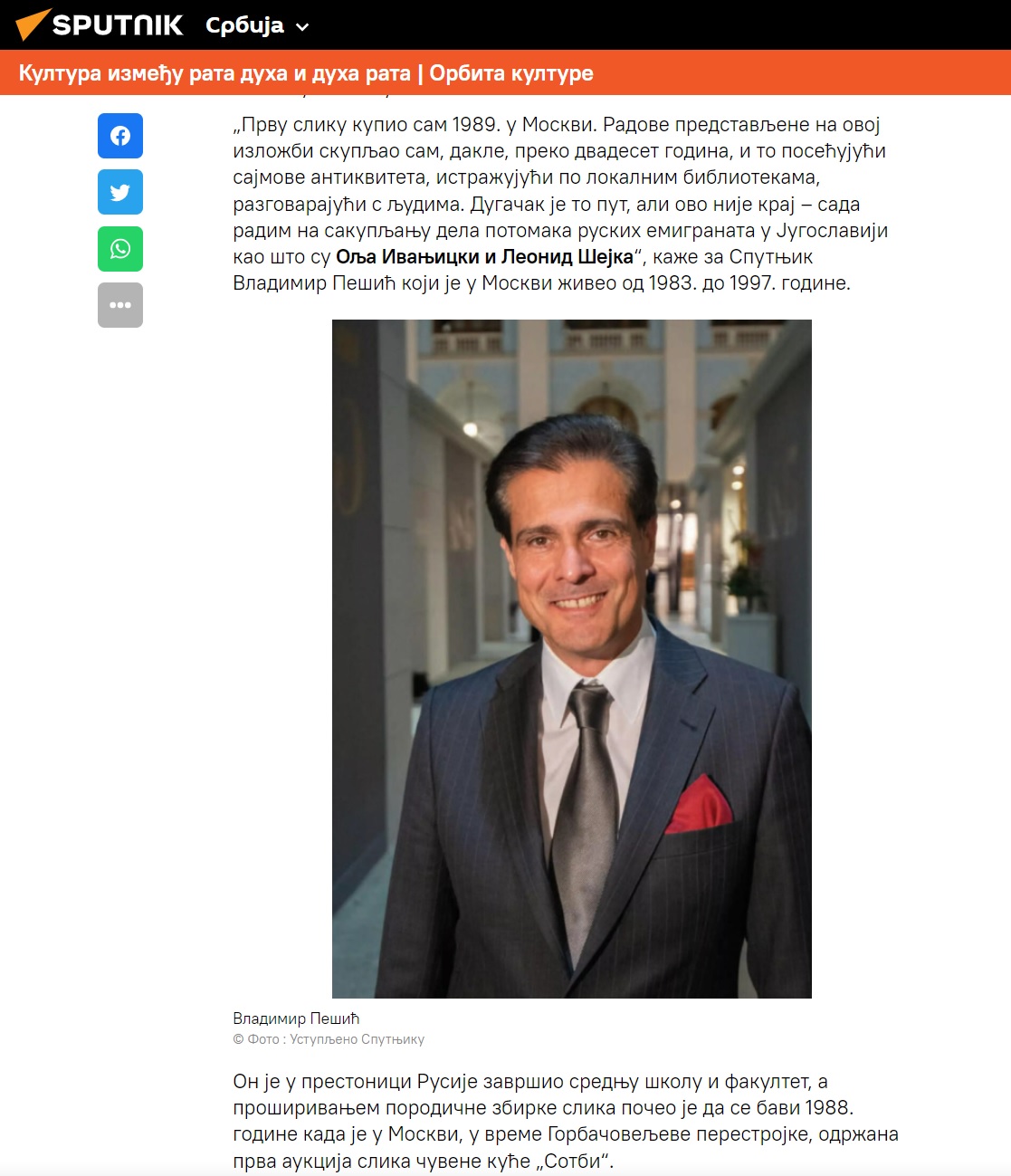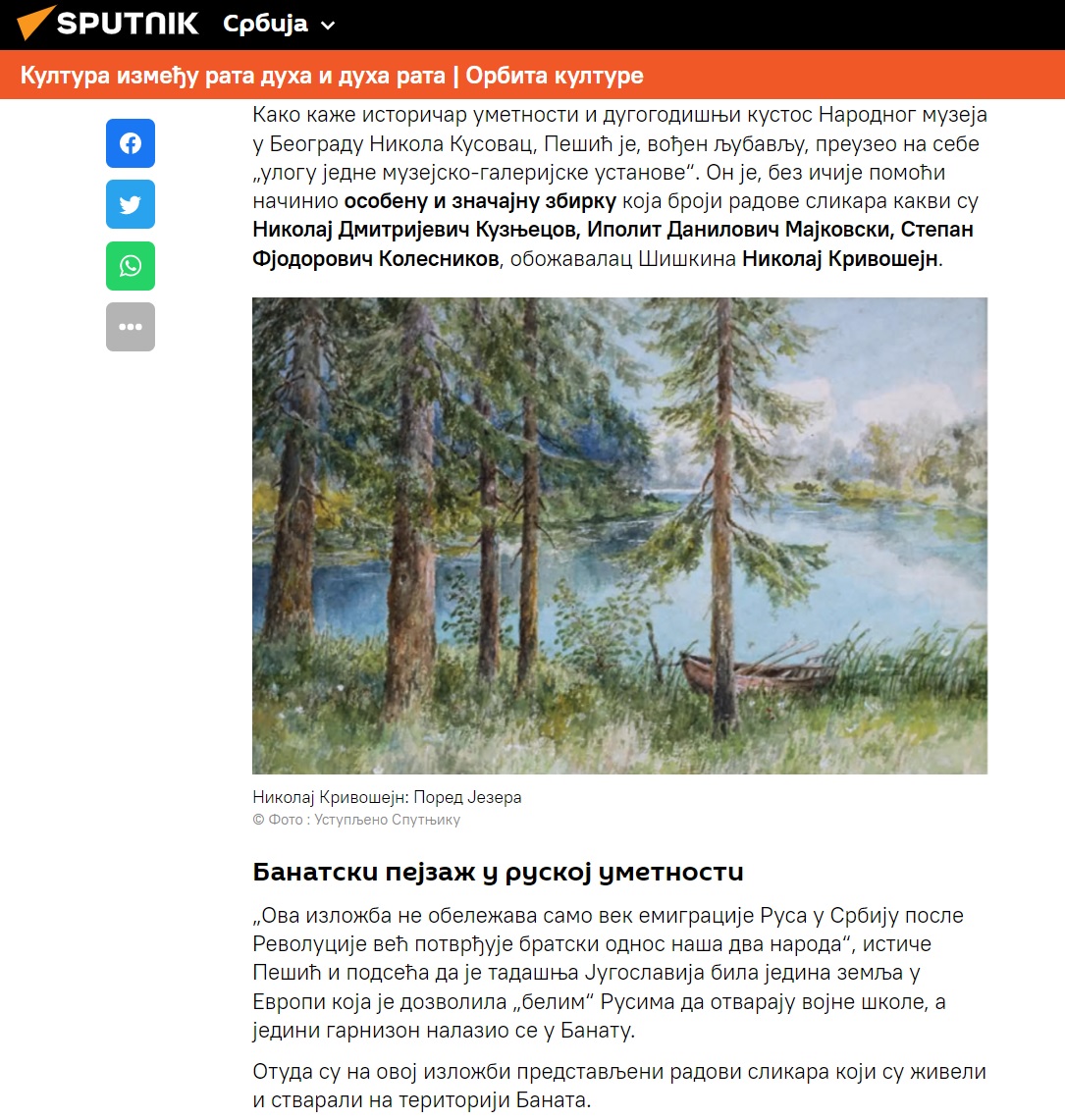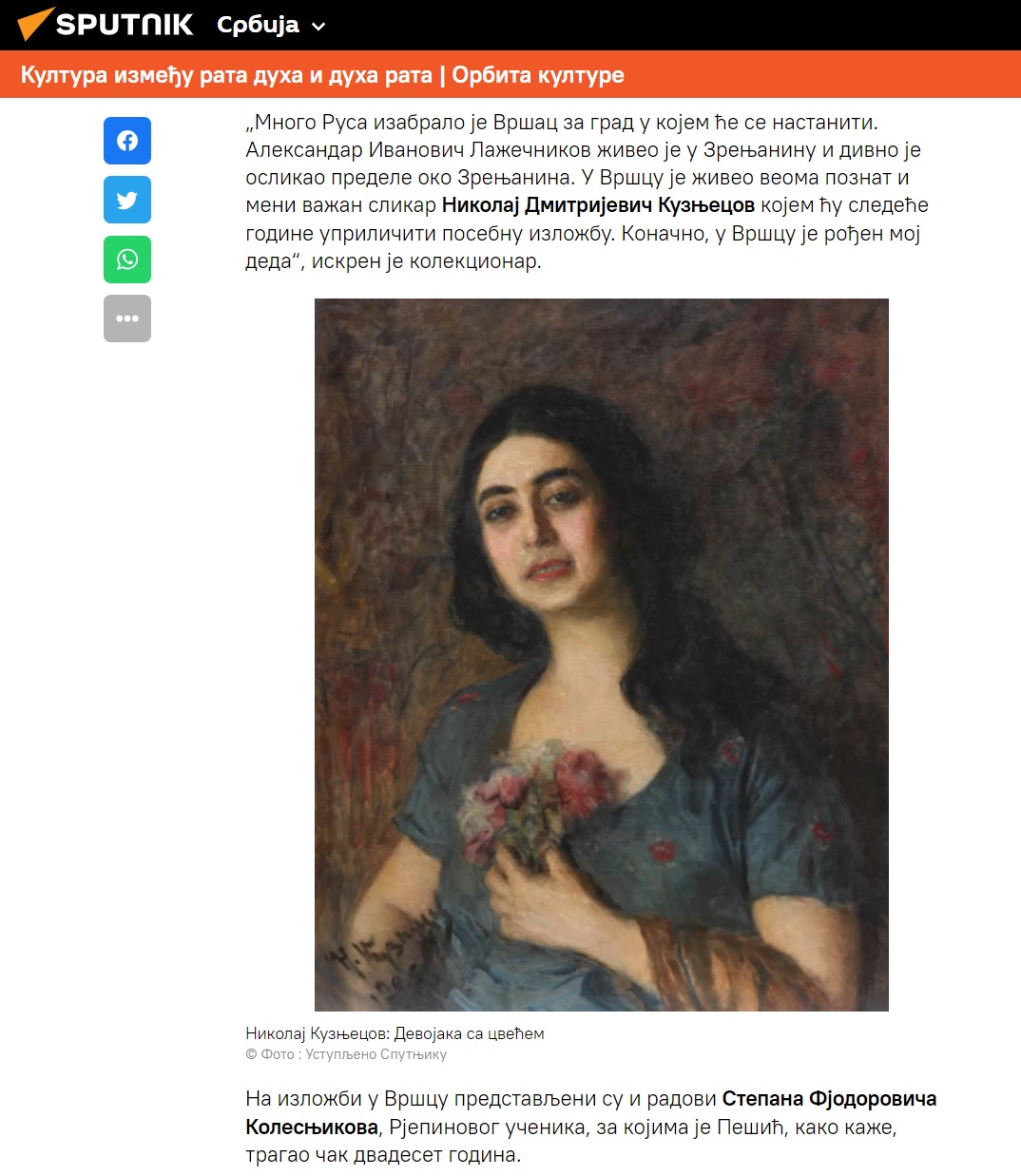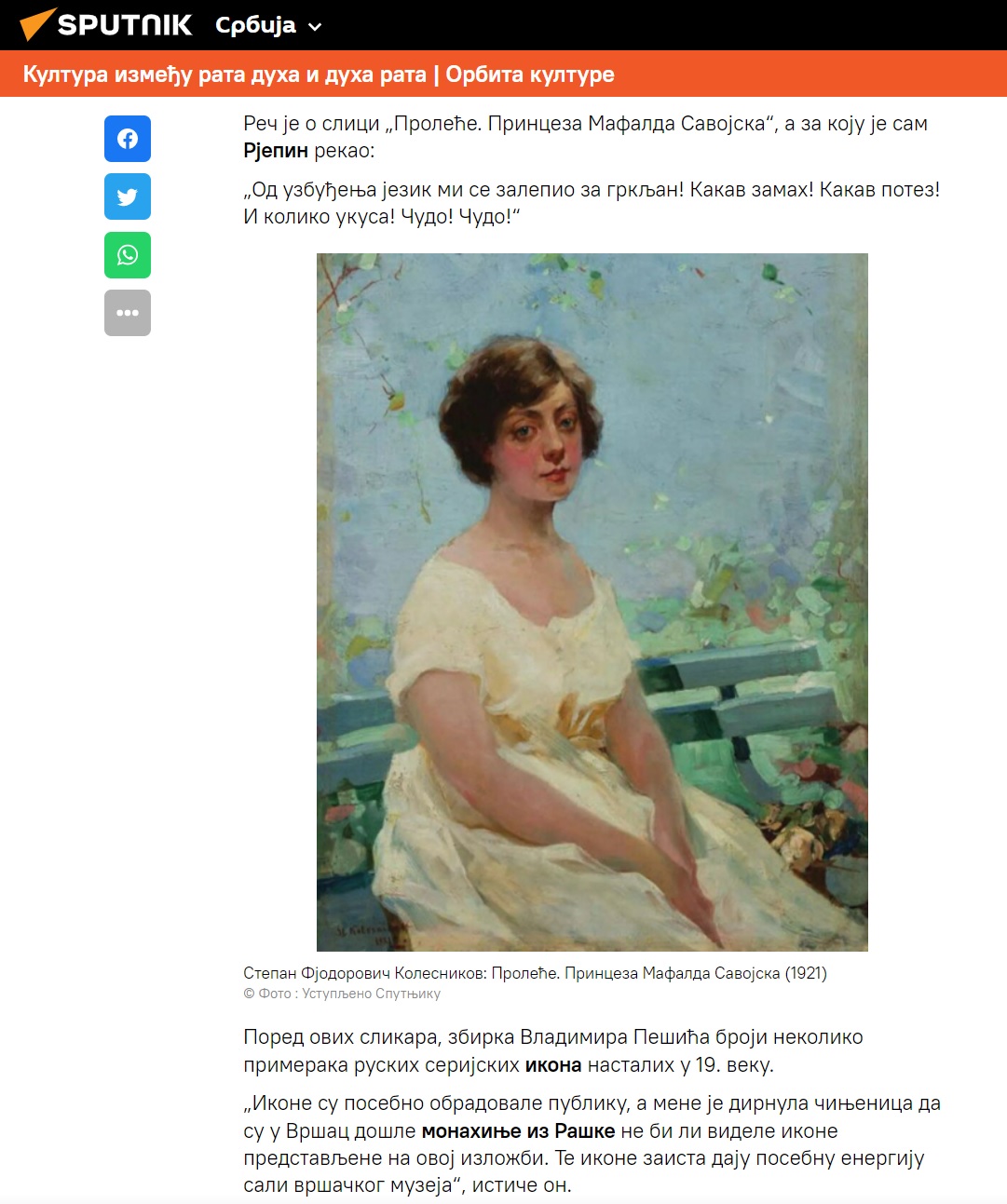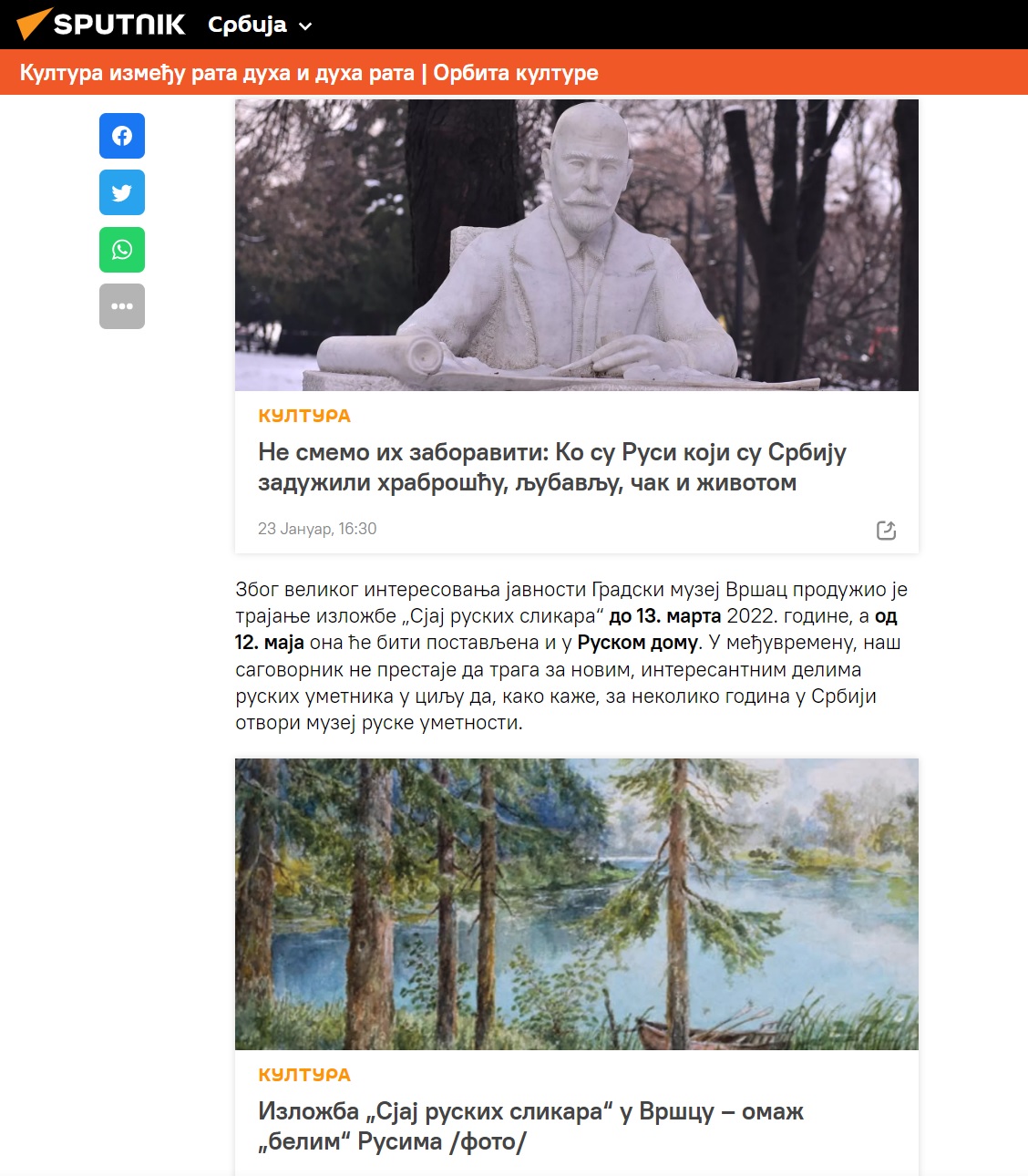NEW AGENCY SPUTNIK SERBIA
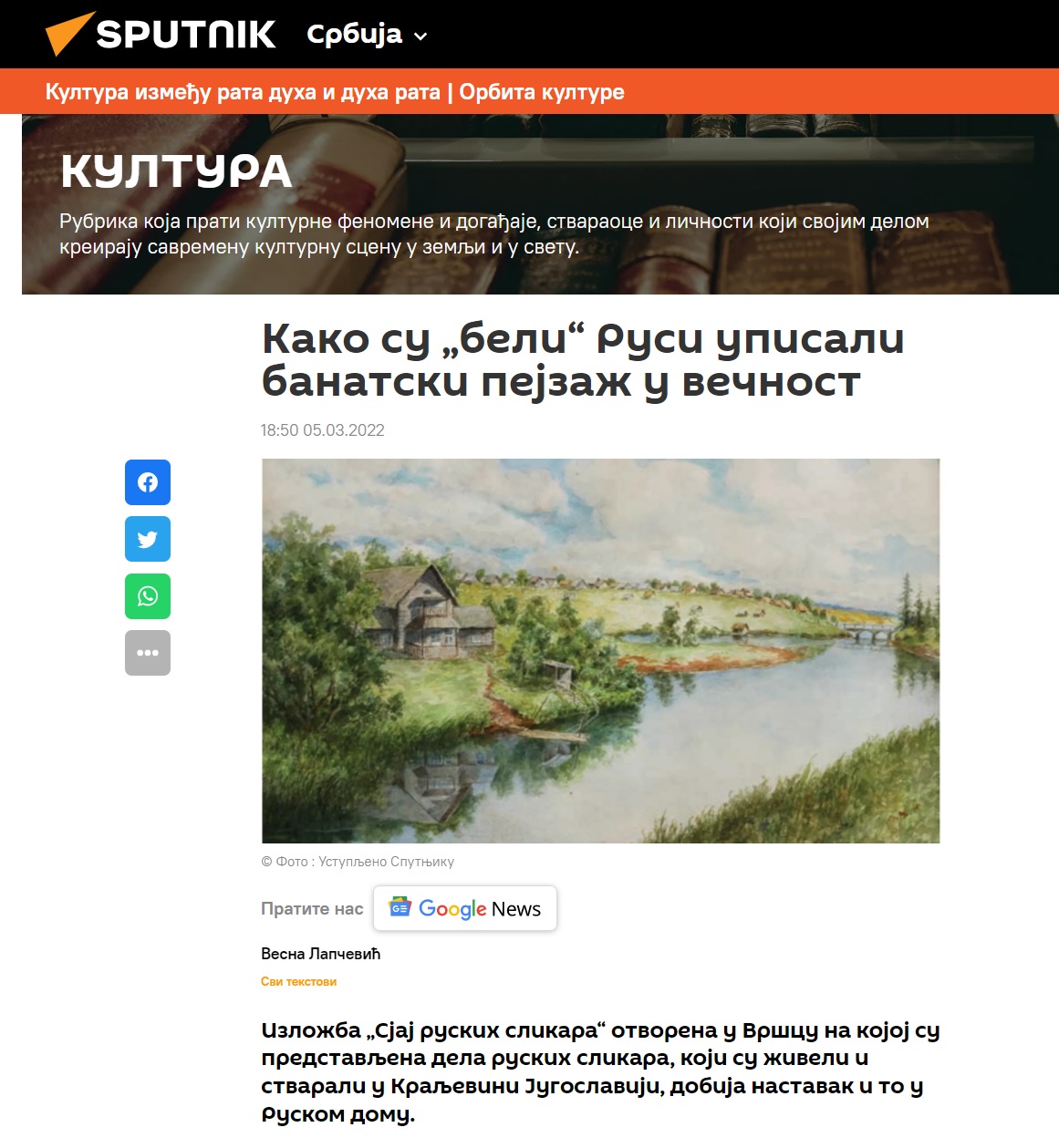
NEWS AGENCY SPUTNIK SERBIA
CULTURE
05.03.2022
Vesna Lapchevich
How the “white” Russians inscribed the Banat landscape in eternity
The exhibition „The brilliance of Russian painters“ opened in city Vrsac, which presents works by Russian painters who lived and worked in the Kingdom of Yugoslavia, now gets its continuation in The Russian House — Russian Centre of Science and Culture in Belgrade.
An exhibition marking the centenary of the arrival of “white” Russians in the Kingdom of Serbs, Croats and Slovenes after the October Revolution is a selection of art works from Vladimir Peshich’s collection. This Serb grew up in Russia and spent years searching for the paintings of Russian artists who, in the period between the two wars, lived on the territory of our country.
He has been collecting pictures of “white” Russians for more than two decades
Historical events that confirm the true connection of the two Slavic peoples took place after the First World War, when thousands of educated officers, scientists, pedagogues, doctors, engineers, builders, artists of all profiles found a new home in Yugoslavia.
Many Russians changed the image of Serbia between the two wars, from Krasnov who gave a new face to our capital, Lobachev, Savoy who formed Yugoslav comics, all the way to those painters who inscribed the landscape of our country in eternity.
„I bought the first painting in 1989 in Moscow. I have been collecting the works presented at this exhibition for over twenty years, visiting antique fairs, researching in local libraries, talking to people. It is a long way, but this is not the end of it – now I am collecting the works of the descendants of Russian emigrants in Yugoslavia, such as Olja Ivanjicki and Leonid Sheika “, said for Sputnik Vladimir Peshich, who lived in Moscow from 1983 to 1997.
He finished high school and college in the Russian capital, and began expanding the family collection of paintings in 1988, when the first auction of paintings of the famous house “Sotheby’s” was held in Moscow, during Gorbachev’s perestroika.
According to art historian and longtime curator of the National Museum in Belgrade, Nikola Kusovac, Pesic, guided by love, took over “the role of a specialized museum-gallery institution”. Without anyone’s help, he created a special and significant collection that includes works by painters such as Nikolai Dmitrievich Kuznetsov, Ippolit Danilovich Maikovskiy, Stepan Fedorovich Kolesnikov, Nikolai Krivoshein, an admirer of Shishkin.
Banat landscape in Russian art
„This exhibition not only marks the century of Russian emigration to Serbia after the Revolution, but also confirms the brotherly relationship between our two peoples“points out Peshich and reminds that the former Yugoslavia was the only country in Europe that allowed “white” Russians to open military schools, and the only garrison was in Banat.
That is why the works of painters who lived and worked on the territory of Banat were presented at this exhibition.
„Many Russians chose Vrsac as the city in which they will settle. Alexander Ivanovich Laznechnikov lived in Zrenjanin and beautifully painted the landscape around it. Nikolai Dmitrievich Kuznetsov, a very famous and to me personally important painter, lived in Vrsac, and I will organize a special exhibition in his honor next year. Finally, my grandfather was born in Vrsac“, honestly said the collector.
The exhibition in Vrsac also presented the works of Stepan Fedorovich Kolesnikov, Repin’s student. Those works, as Peshich said, he had been searching for twenty years.
It is the painting „Spring. Princess Mafalda of Savoy“, about which Repin himself said:
„ My tongue stuck to my throat with delight! What a stroke! What a brush! Such aesthetic taste! Miracle! Miracle! “
In addition to these painters, Vladimir Peshich’s collection includes several Russian serial icons created in the XIX century.
„The icons made the audience especially happy, and I was moved by the fact that nuns from Raska came to Vrsac to see the icons presented at this exhibition. Those icons really give special energy to the halls of the museum in Vrsac“, he pointed out.
Due to the great interest of the public, the City Museum of Vrsac extended the duration of the exhibition „The brilliance of Russian painters“ until March 13th 2022, and from May 12th, this exhibition will be set in The Russian House — Russian Centre of Science and Culture in Belgrade. In the meantime, our interviewee does not stop searching for new, interesting works by Russian artists with a goal to open a museum of Russian art in Serbia in a few years, as he says.
